American Graffiti superfan’s ’32 Ford replica preserves the movie’s magic
The first time that Joseph Reyer saw American Graffiti, it turned into an all-day affair—and ignited a lifelong obsession with the movie.
“I was about 13 when it came out,” Reyer says of the 1973 film created and directed by George Lucas. “My mom dropped me off at the movie theater, and it was so good that I called her afterward and said, ‘Don’t pick me up. I’m going to watch it again.’ Then I called her again and said, ‘Don’t pick me up yet. I’m going to watch it again.’ She said, ‘This is the last time!’”
It wouldn’t be.
“I’m such a huge American Graffiti fan,” the Detroit-area native says. “I’ve seen it probably 30 times, and I have it in all forms—VHS, DVD, Blu-Ray. I also have all sorts of memorabilia, including an original poster. I’m just nuts about this movie.
“It had such a profound effect on me, especially (John) Milner’s coupe. I couldn’t tell you the (name of the) first girl I kissed, but I can tell you the first car I fell in love with. That one.”

Reyer’s appreciation for the American Graffiti, which turns 50 later this summer, has never waned. Twenty-five years ago he bought a black 1955 Chevy 150 similar to the one that a young Harrison Ford (playing Bob Falfa) drove in the film. He still owns the car. “It isn’t a replica,” Reyer says, “but it’s black, turn-key, and gorgeous, so I went for it.” The seller also had a ’32 Ford, but as much as Reyer would have loved to buy it and recreate the yellow hot rod that Paul Le Mat (Milner) drove in the film, he decided against it. The financial math just didn’t make sense.
A detailed ’32 Ford replica became his holy grail.
***
Reyer’s passion for cars came from both his parents, but his father, Joe, was his biggest influence. “My dad was very supportive of my love for cars. I can remember sitting on the fender of his ’64 Impala. He said he never had to look for me because he always knew he could find me in the garage.”
The son not only followed his father into the garage but also in his professional footsteps, becoming an electrician for Ford Motor Company. “Dad worked at the Michigan Truck Plant for 35 years, and I worked there for 15. He always encouraged me. He really made all of this possible.”
For its part, American Graffiti opened doors for nascent talents to break into the movie business, many of whom became Hollywood heavyweights. Even Lucas, whose resume to that point included just one film—a sci-fi flick called THX 1138—can look to Graffiti as his launch pad to stardom. Reflecting on his own experiences with cars, cruising, and rock ’n’ roll music as a teenager in Modesto, California, Lucas needed only three weeks to write the movie’s coming-of-age script about one end-of-summer night in 1962. That was after his friends, screenwriters Willard Huyck and Gloria Katz, had to back out to work on another film.
“Like most kids who grew up in the Valley, I had a strong interest in cruising,” Lucas said in a documentary included on the Blu-Ray edition of American Graffiti. “When I got to college (at the University of Southern California), I studied anthropology and began to realize that [cruising] was a uniquely American dating ritual involving automobiles.
“When I came up with the idea of doing the movie … I really felt compelled to document the whole experience of cruising and what my generation used as a way of meeting girls and what we did in our spare time. I wanted to document the end of an era, how things change—life passages—how you go from being a student into the real world.”
Lucas shopped the script around Hollywood, but he says “nobody wanted to do it.” After a rewrite, Universal agreed to make the movie, a decision that came no doubt with help from Lucas’ friend Francis Ford Coppola, who signed on as executive producer. Just before production began, Huyck and Katz—freed from their previous commitment—assisted in beefing up the script, particularly the love story of Steve Bolander (Ron Howard) and Laurie Henderson (Cindy Williams).
Lucas spent six months casting the film and says he “saw thousands of kids.” Those he ultimately chose to include in the film did not disappoint. The best known actor of the group was Howard, who starred as Opie on the Andy Griffith Show when he was a kid; the rest were basically unknowns—at the time, anyway. In addition to Howard, Williams, Ford, and Le Mat, the lead parts went to Richard Dreyfuss, Mackenzie Phillips, Charlie Martin Smith, and Candy Clark. Lucas also brought in legendary disc jockey Robert Weston Smith, better known as “Wolfman Jack,” to string together the 41 hit songs that serve as the soundtrack.

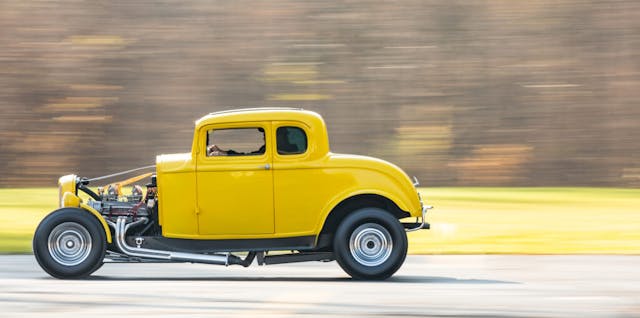
Henry Travers, the film’s transportation manager, was responsible for locating and maintaining the cars that Lucas wanted in the film, including the ’32 Ford (originally purchased for $1300), the ’55 Chevy (which was also used in Two-Lane Blacktop), the 1958 Chevrolet Impala driven by Howard, the 1958 Edsel Corsair driven by Williams, the 1967 Citroën 2CV (yes, a ’67 for a movie that was set in ’62) driven by Dreyfuss, the 1951 Mercury coupe driven by the Pharaohs, and the 1956 Ford Thunderbird driven by another newcomer, Suzanne Somers.
The entire movie was filmed in 28 days, mostly at night and on a budget of $750,000 (about $5.1 million today). There was no money for original music or incidentals. The budget was so tight, in fact, that between takes the cast members sat on the curb or rested in cars. Fancy trailers were nowhere to be seen.
As Howard recalled in the documentary, “I finally went to Francis and I said, ‘You know, Francis, I know it’s a low-budget movie; it’s great—the spirit of the movie is wonderful … Do you think we could have a chair? Could we just have chairs?’ And he said, ‘Well, no, there’s nothing in the budget for chairs.’”
American Graffiti went on to make $140 million.
“I met Paul Le Mat once about 20 years ago,” Reyer says, “and I said, ‘It looked like you had a great time making that movie.’ He said, ‘It was the greatest 30 days of my life.’”

***
Reyer, 61, saw plenty of replicas of John Milner’s ’32 Ford through the years, “but there was always just too much to do to make them right.” Then, in 2022, opportunity knocked: an astonishingly accurate replica came up for sale, built by Jack Bell and perfected in Arkansas by second owner Nick Coe, with help from Rob Pruitt, Dan Griffin, Tim Bowman, and Dr. Rachel’s Upholstery Clinic, which cloned the interior of the original.
“The more I looked at it, the more I thought, ‘Holy cow, this guy nailed this,’” Reyer says. “I mean it’s 99.9 percent correct. I’ve seen a lot of replicas over the years, and nothing comes close to this one. I thought, ‘This guy is as crazy as I am.’ I asked Nick, ‘Do we have a sickness?’ And he said, ‘Yes, we do. And it’s a good one.’”
Reyer just had to have the car.

Coe, a fellow American Graffiti fanatic, decided to let the yellow Deuce go only because his son was ill and he could use the money. Reyer assured him that it would be in good hands. “You still have visitation,” he promised.
Among the Ford’s movie-matching features are small-block 327 Chevy V-8 engine, Ansen swing pedals, interior trim off a ’56 Ford, steering wheel, piston gear shift knob, front axle, front chrome shocks, rear suspension, headlights and headlight bars, and tinted windows.
Reyer loves taking the Ford to car shows and advancing the American Graffiti gospel. “I want everybody to catch the bug,” he says. “I’m a super spreader.”
No one is immune, especially not his family, which includes son Jeremiah and daughter Christin, five grandchildren, and a sixth grandchild on the way. “I’m just the caretaker; this will be Jeremiah’s someday,” Reyer says. “And I’m going to get a gearhead out of one of those grandkids, you can be sure of that.”
It’s a lineage that began with his parents, particularly his dad.
“He would be as excited about this car as I am,” Reyer says of his father, who passed away in 2020. “I wish he was still here to see it come to fruition. I restored a ’66 F-100 pickup for him, and it was his pride and joy. I remember he’d look at it in the garage every night before he went to bed. I do that now with this car. I feel like I won the lottery.”
***
Check out the Hagerty Media homepage so you don’t miss a single story, or better yet, bookmark it. To get our best stories delivered right to your inbox, subscribe to our newsletters.
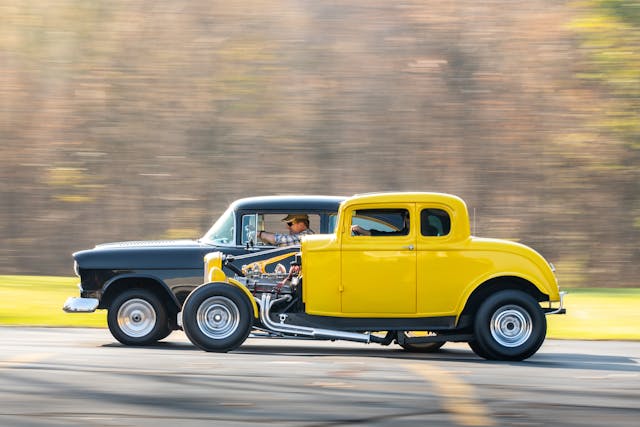
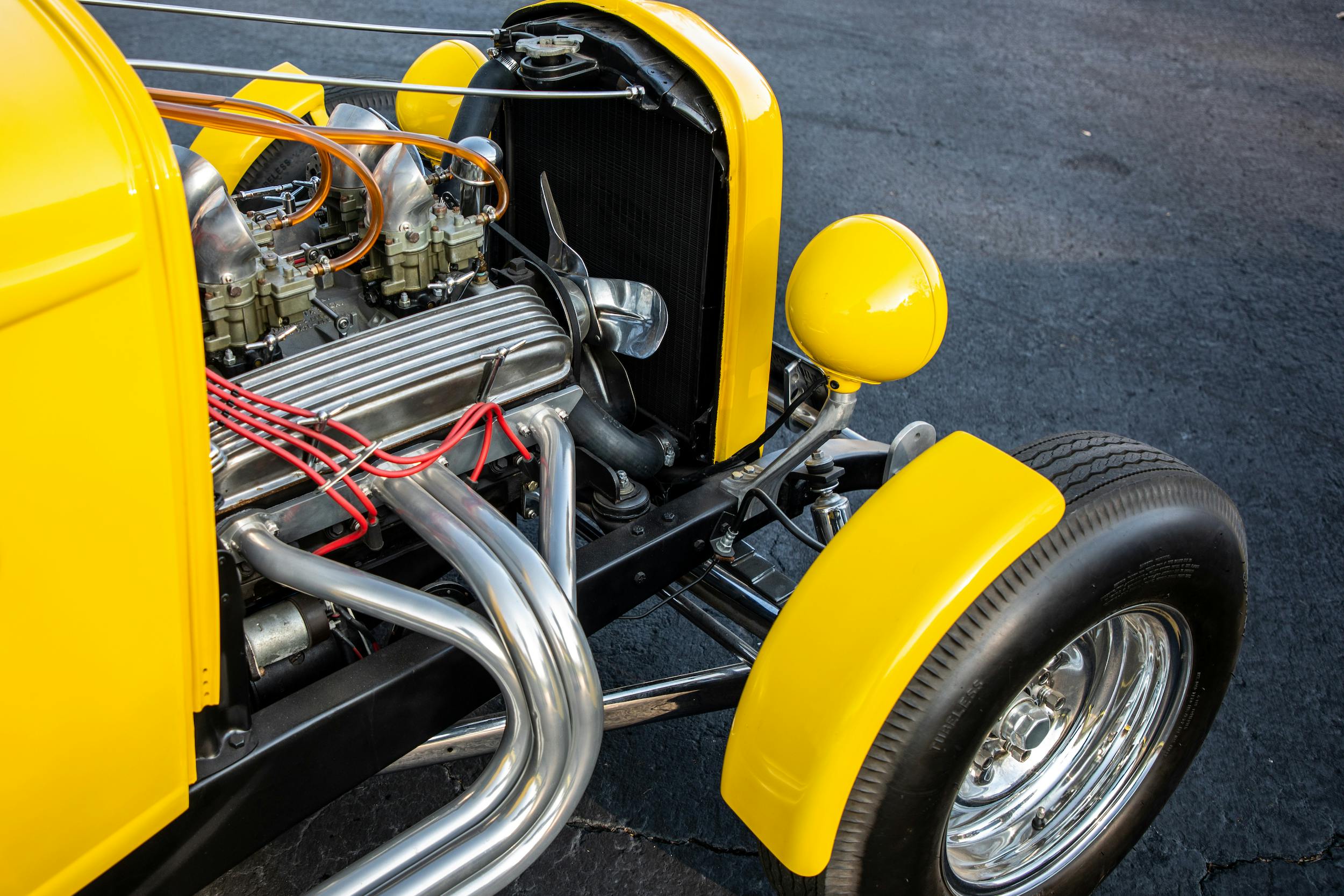
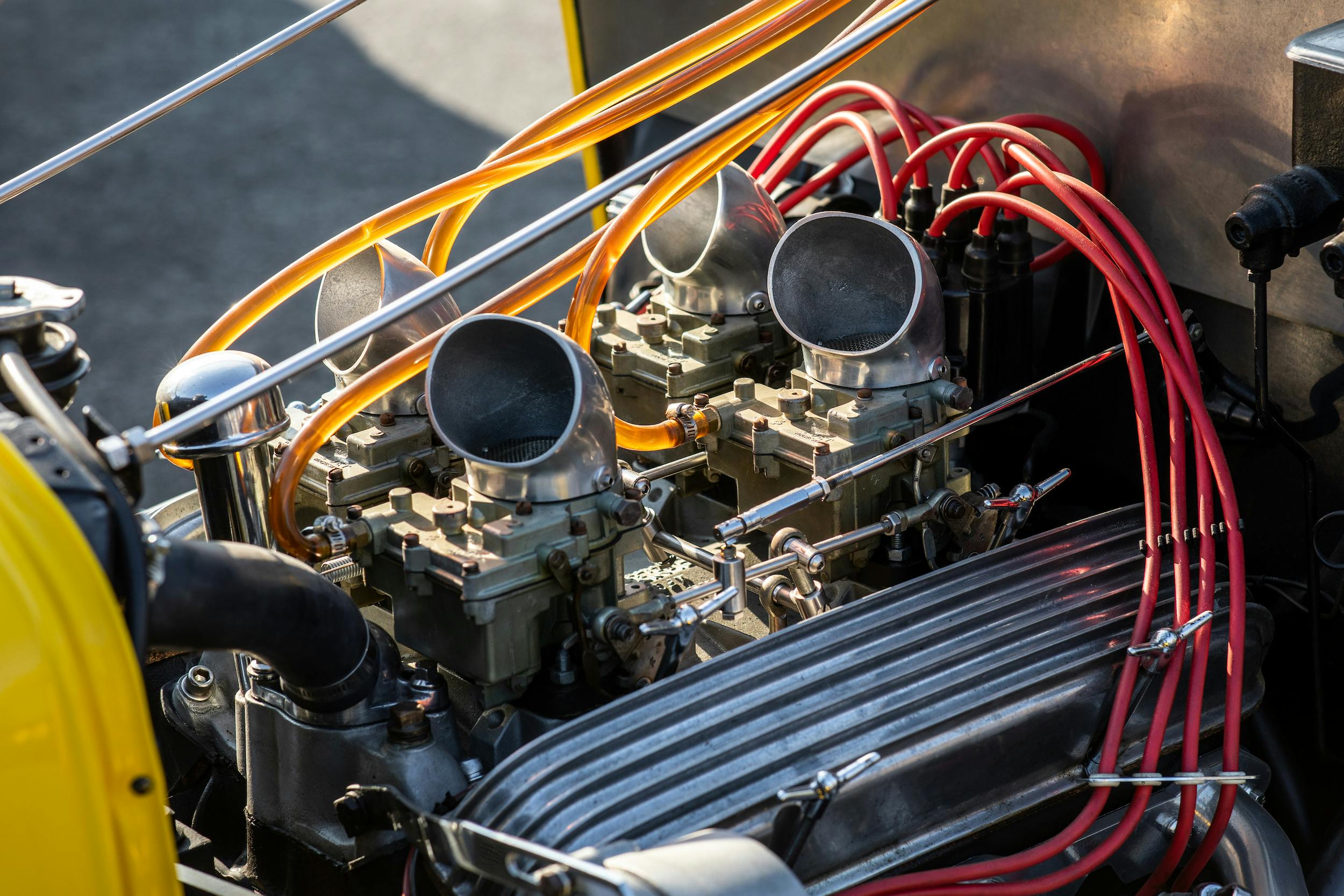

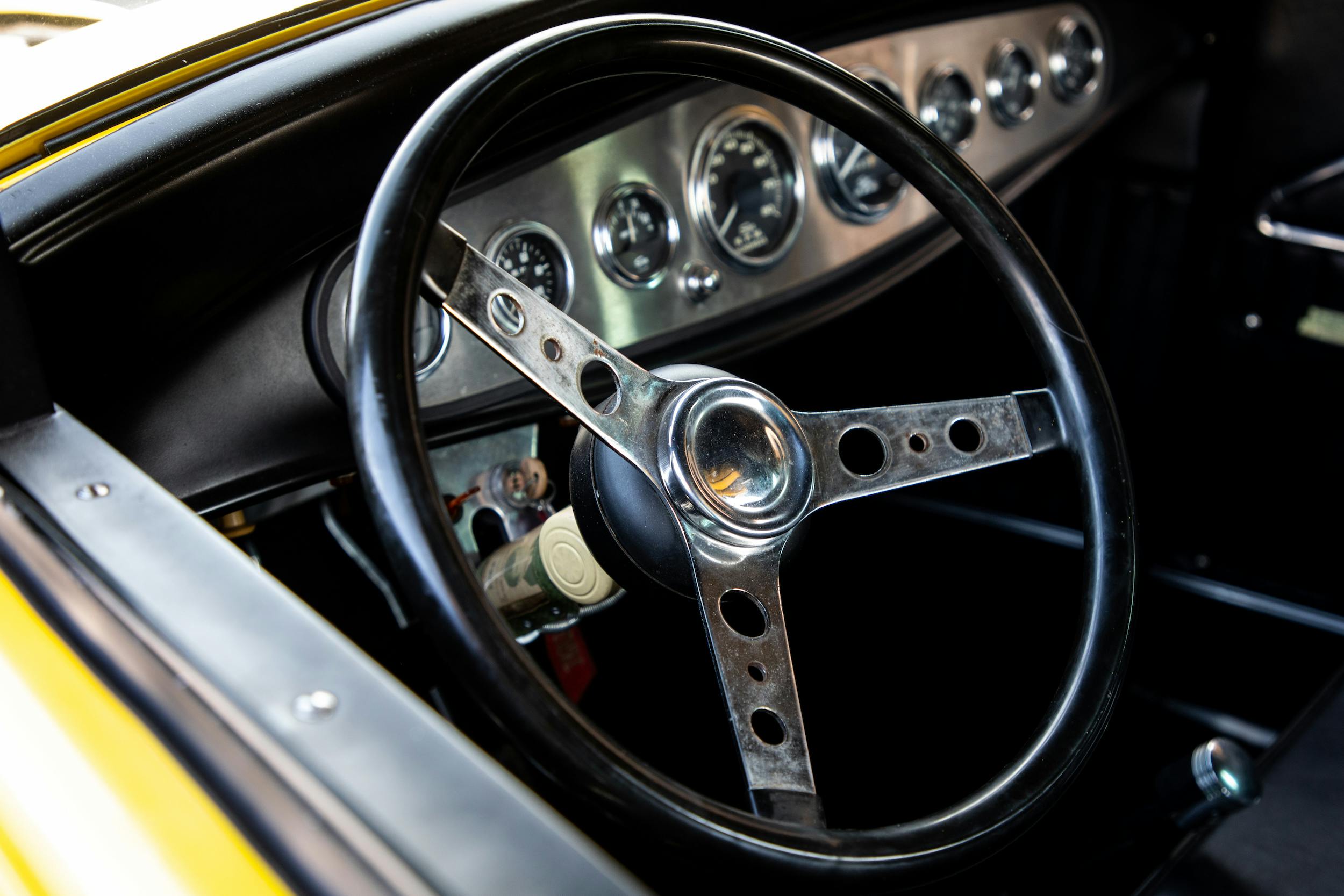
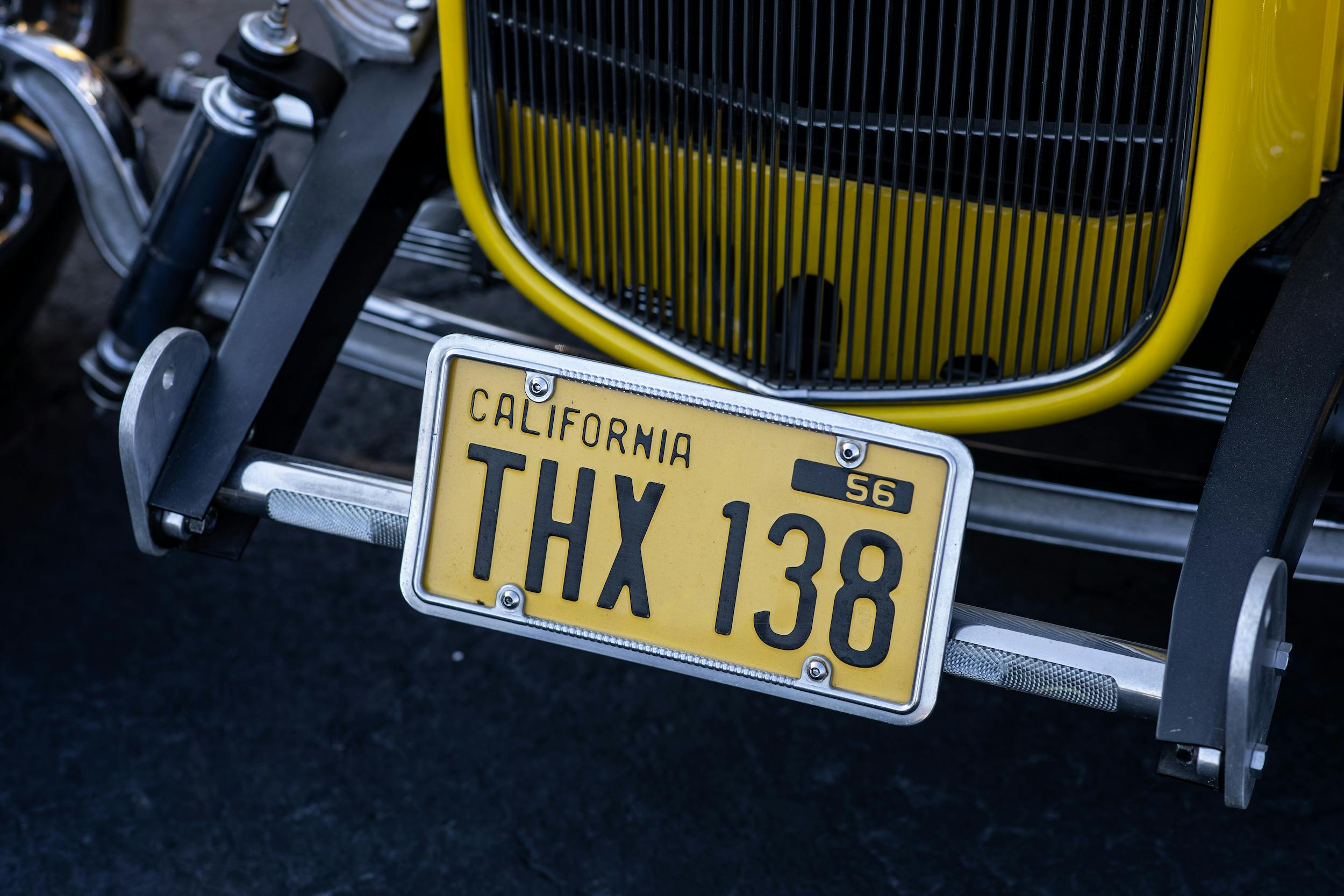
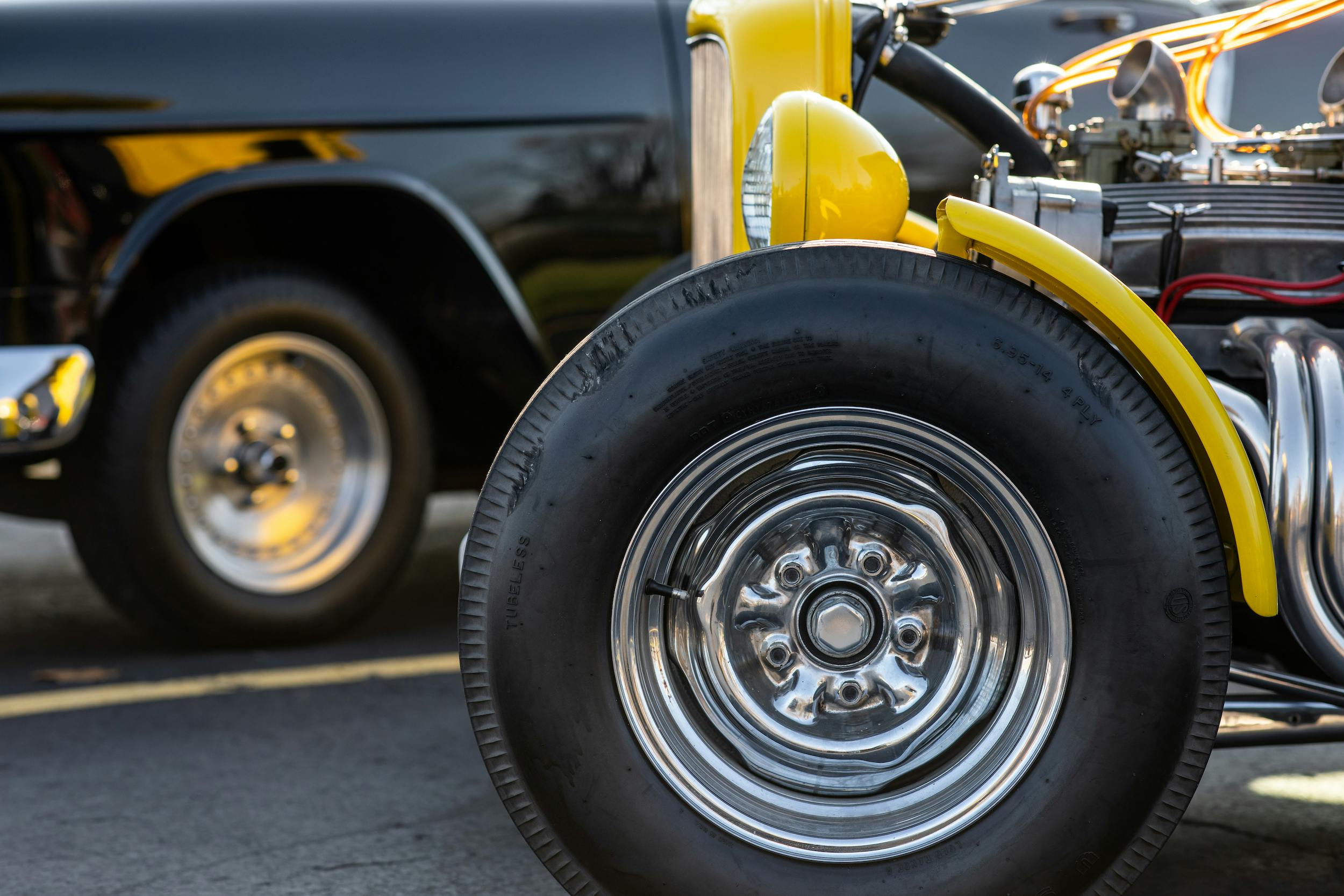
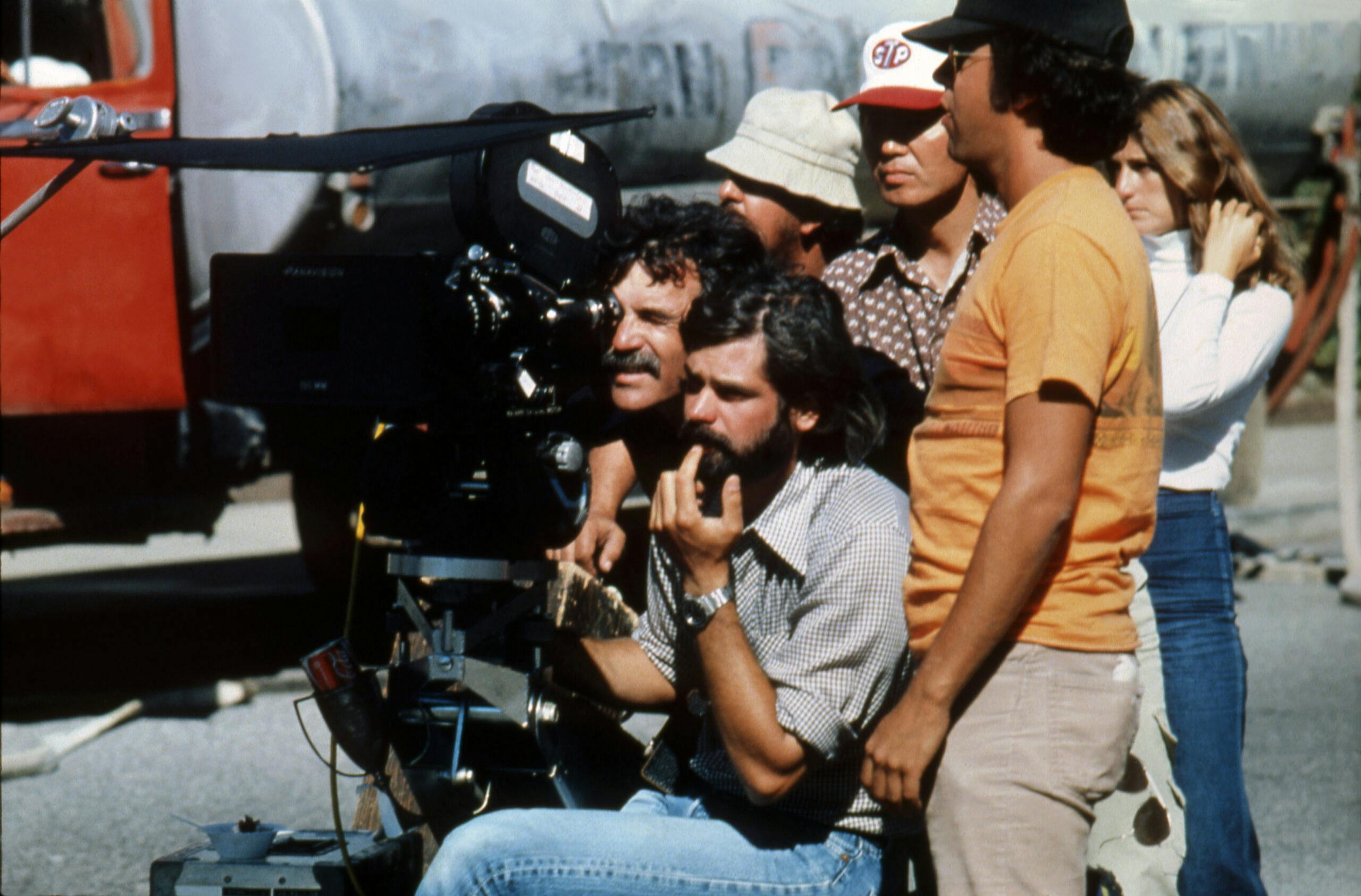
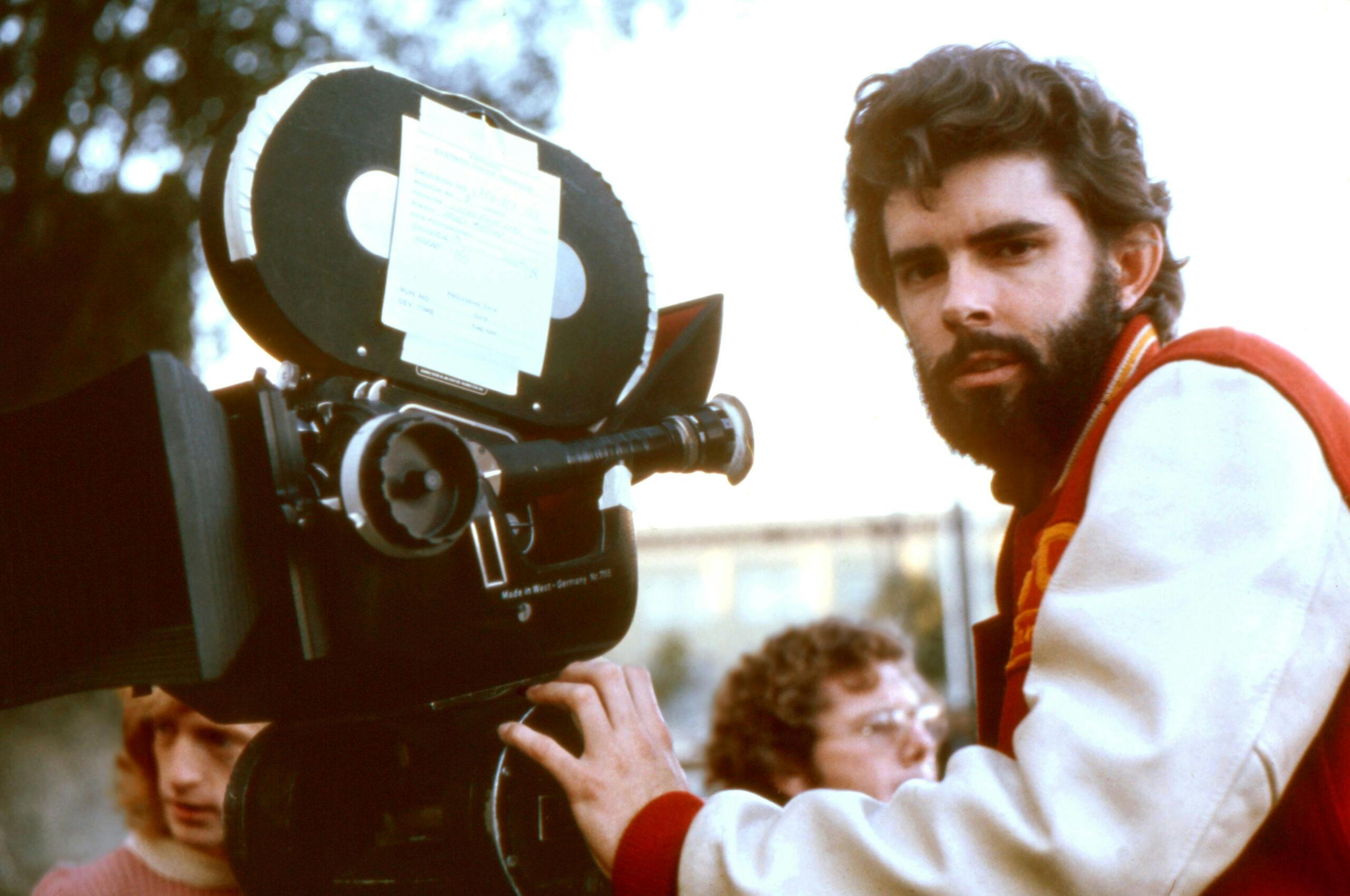

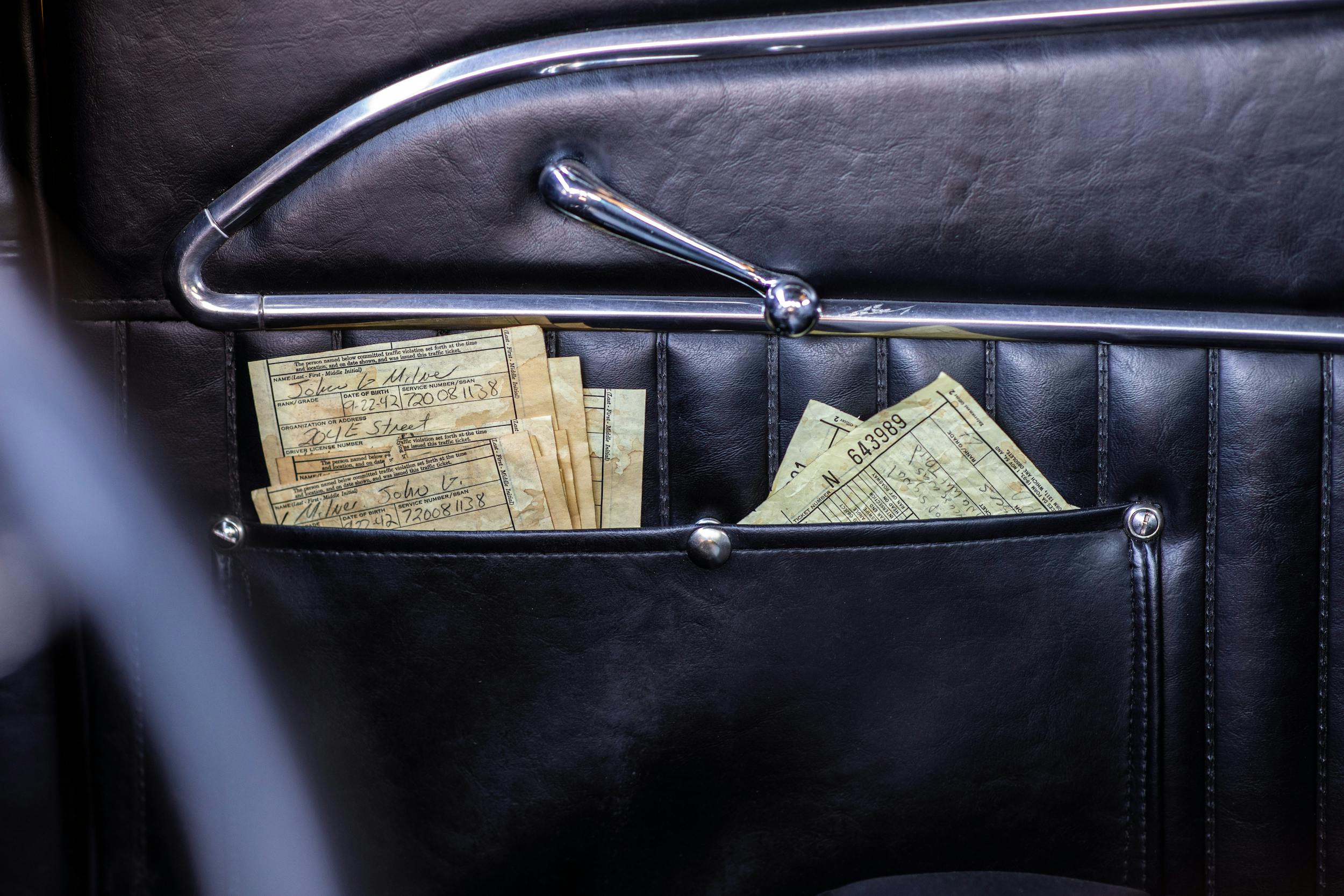
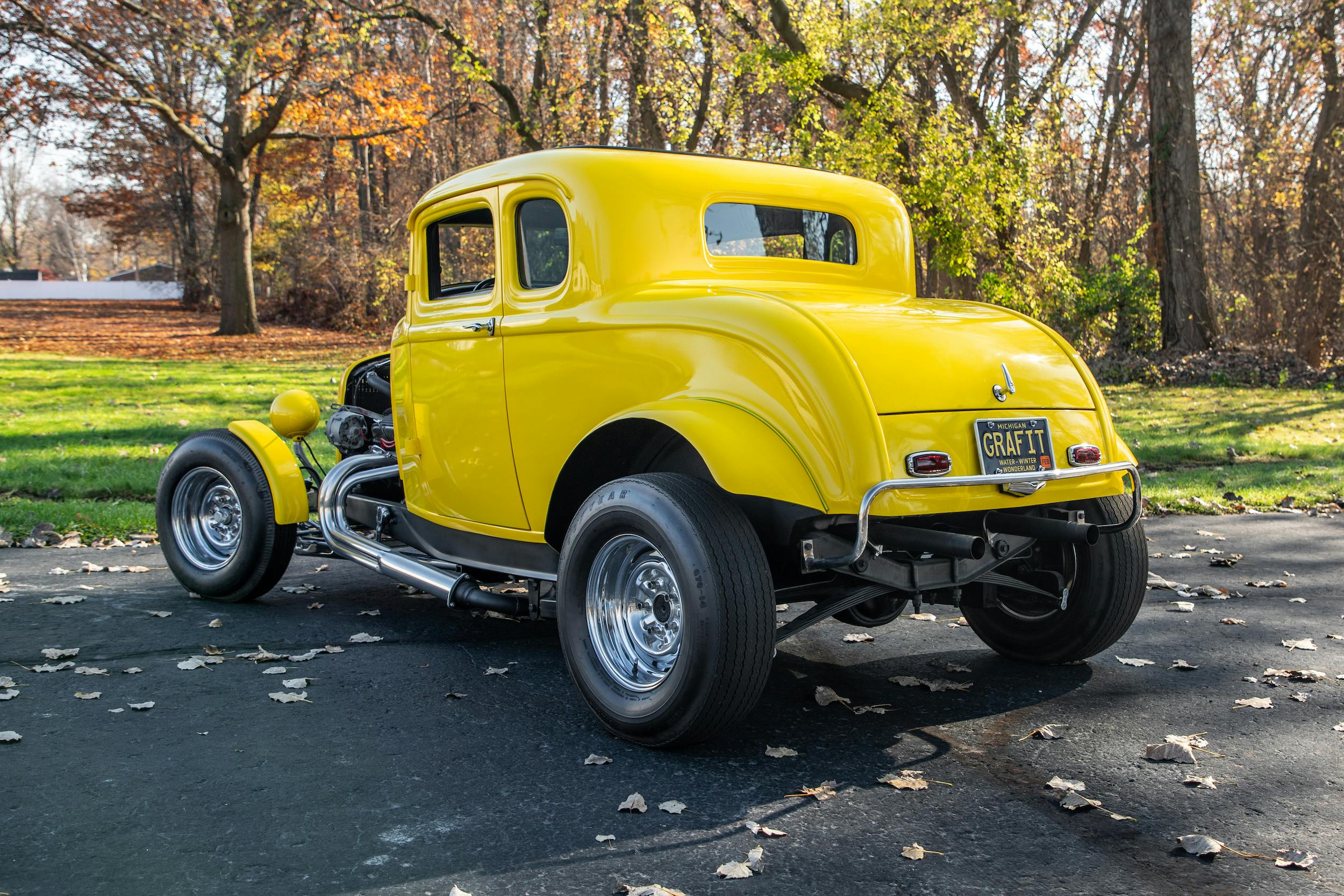
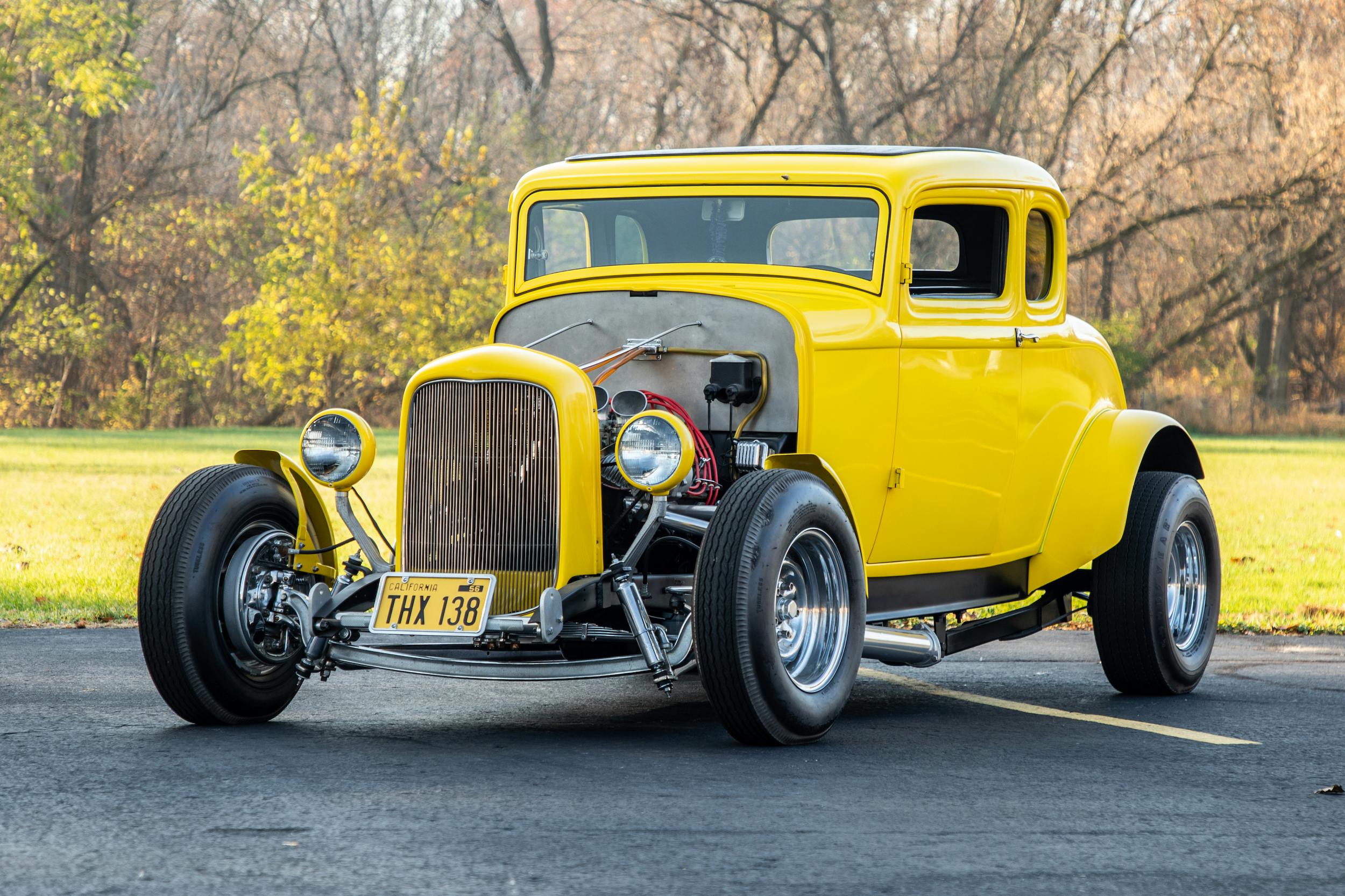
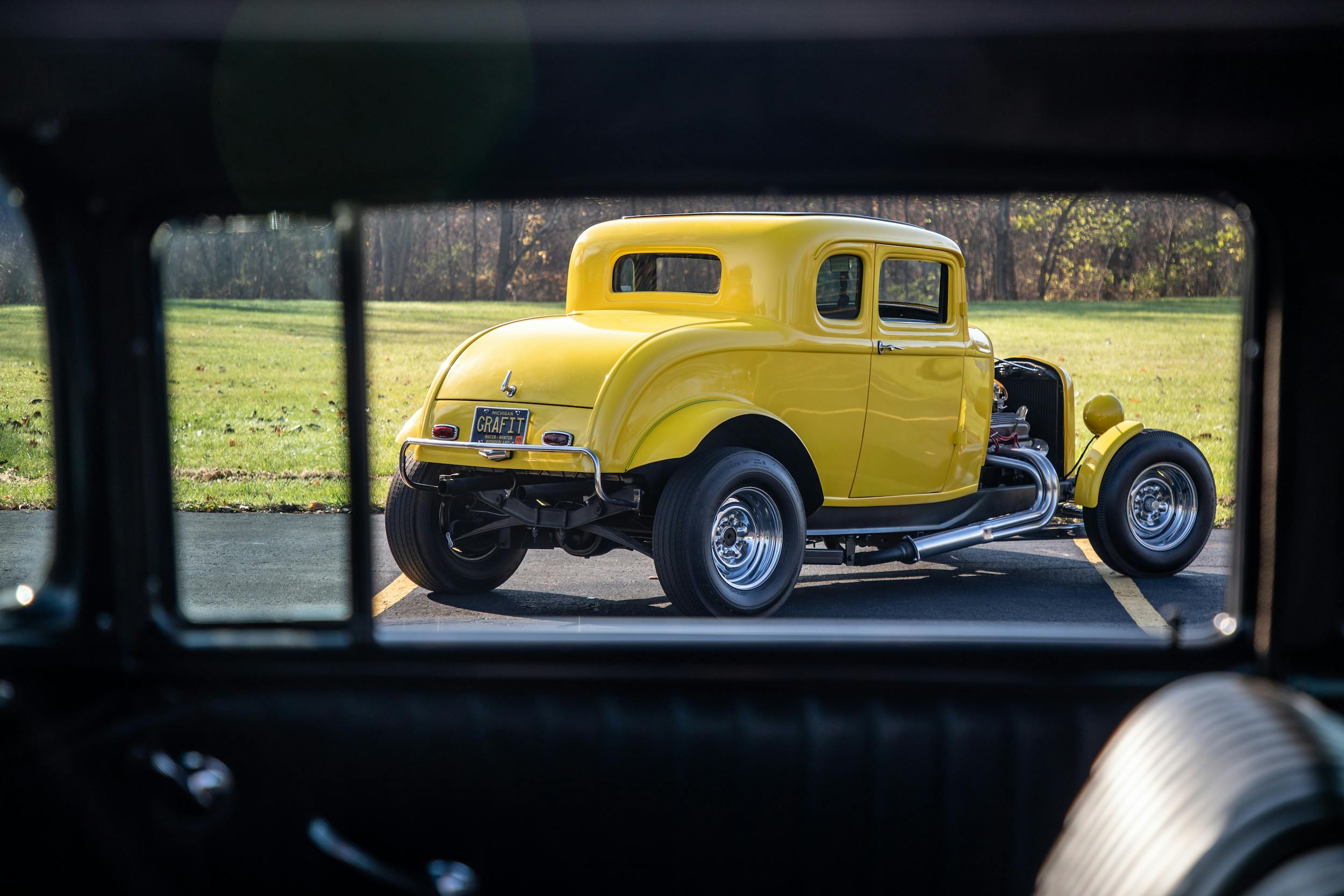
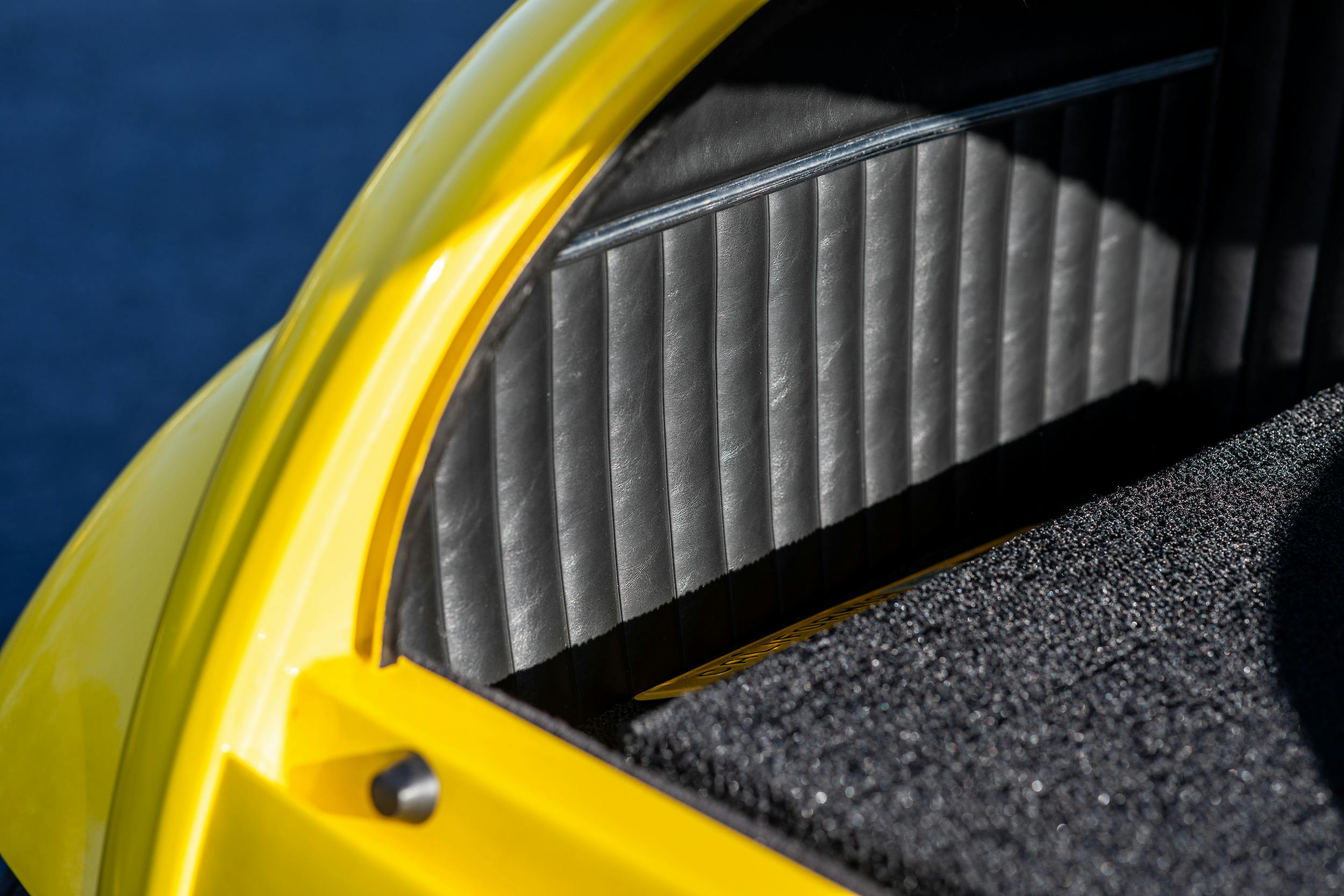
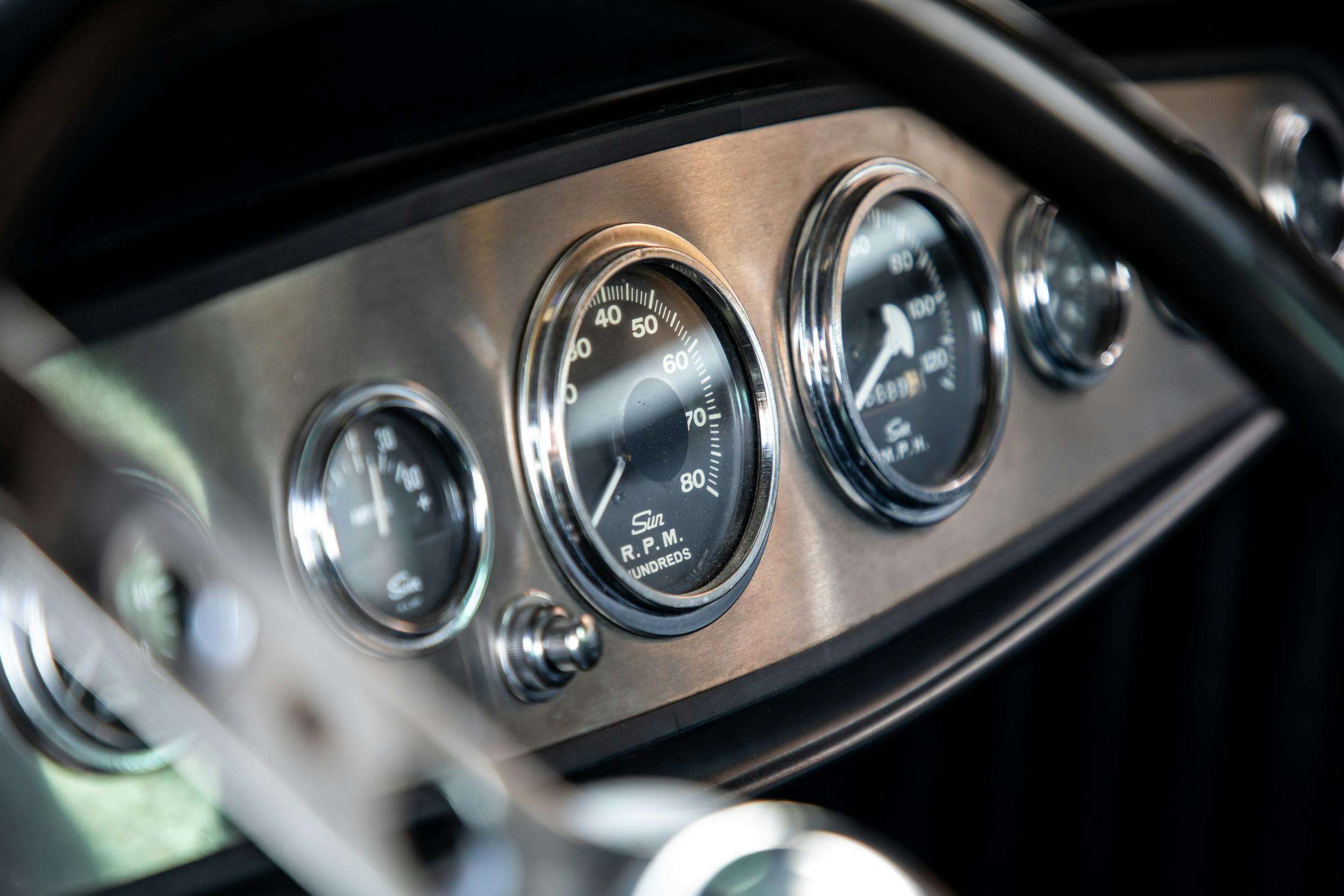
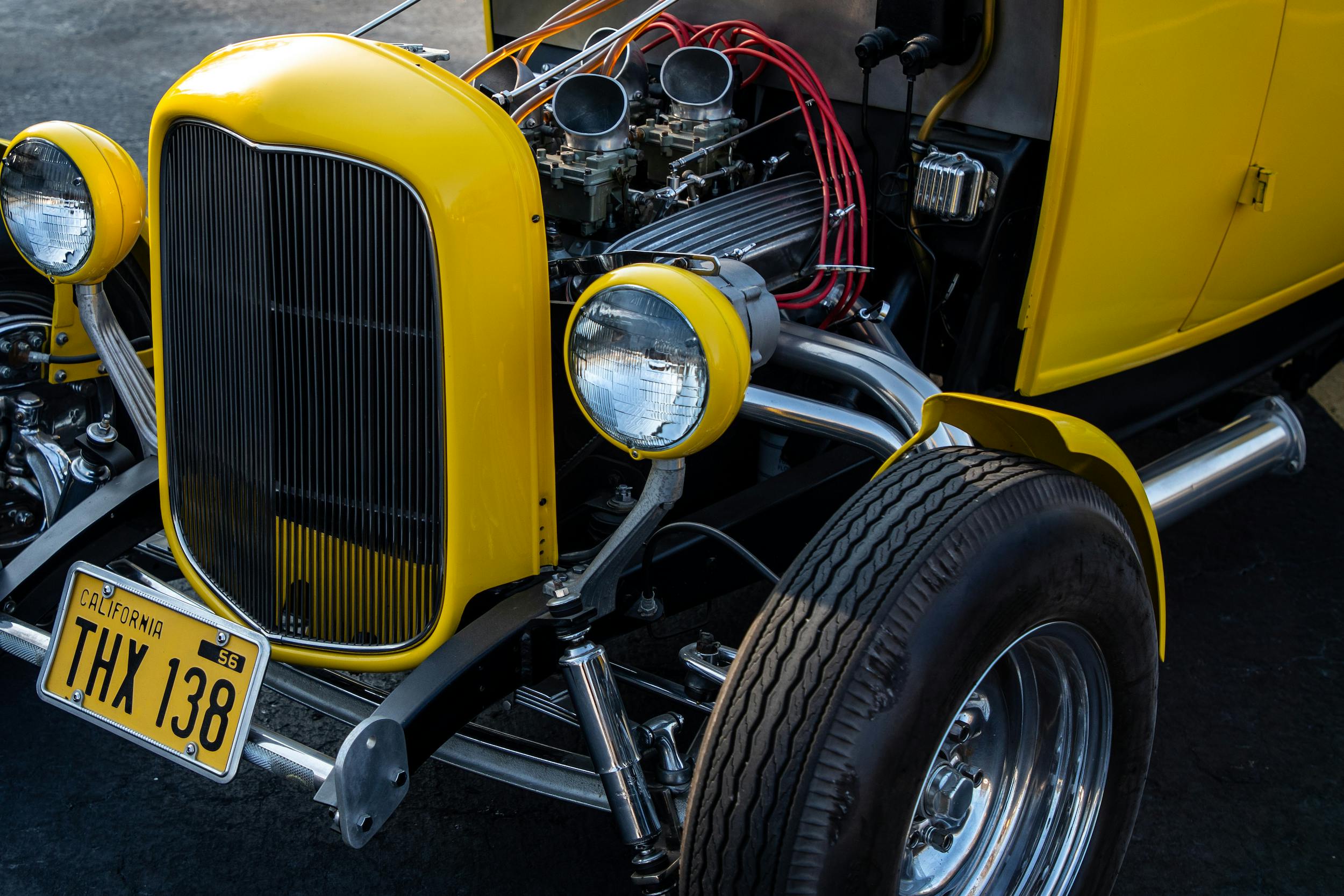
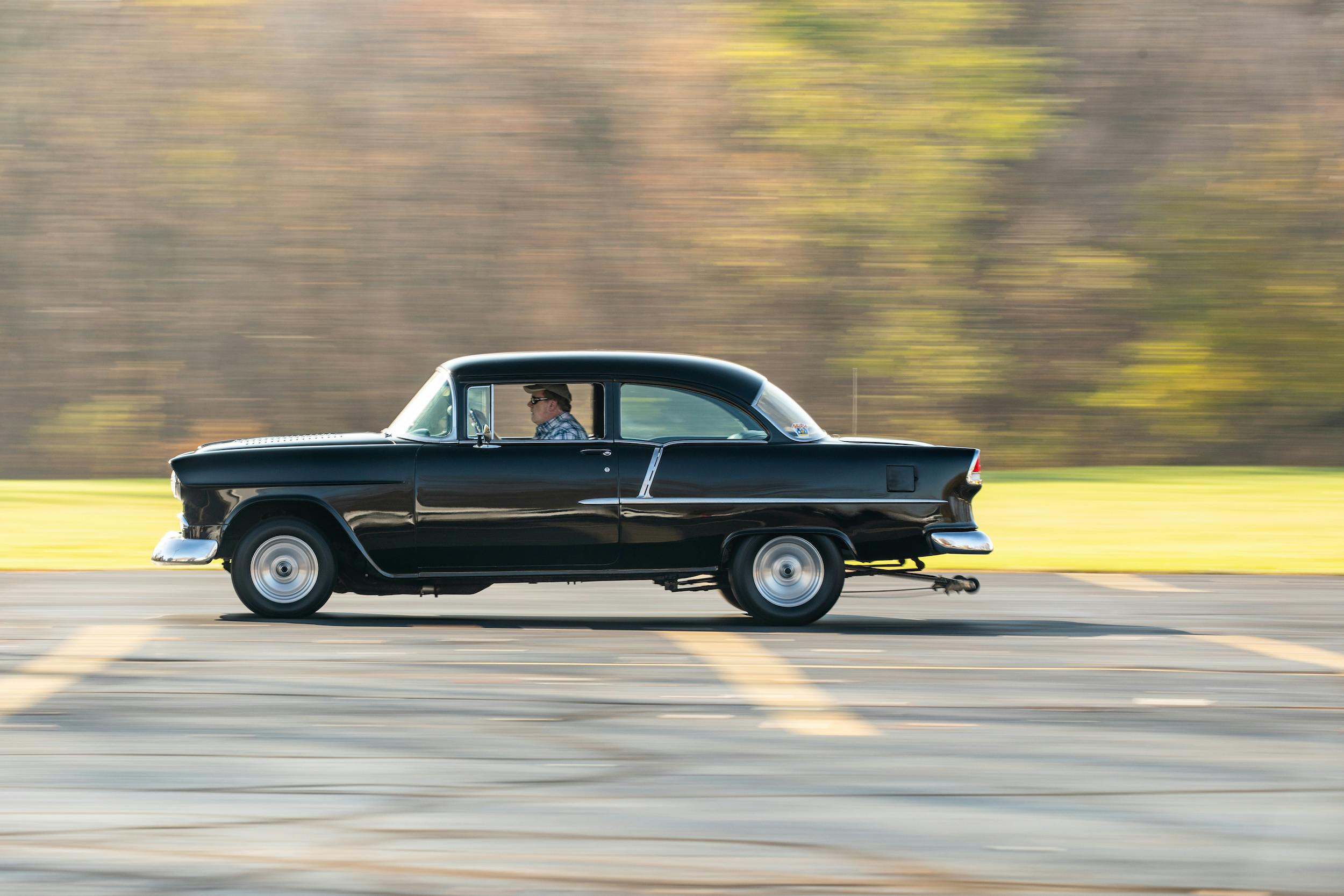

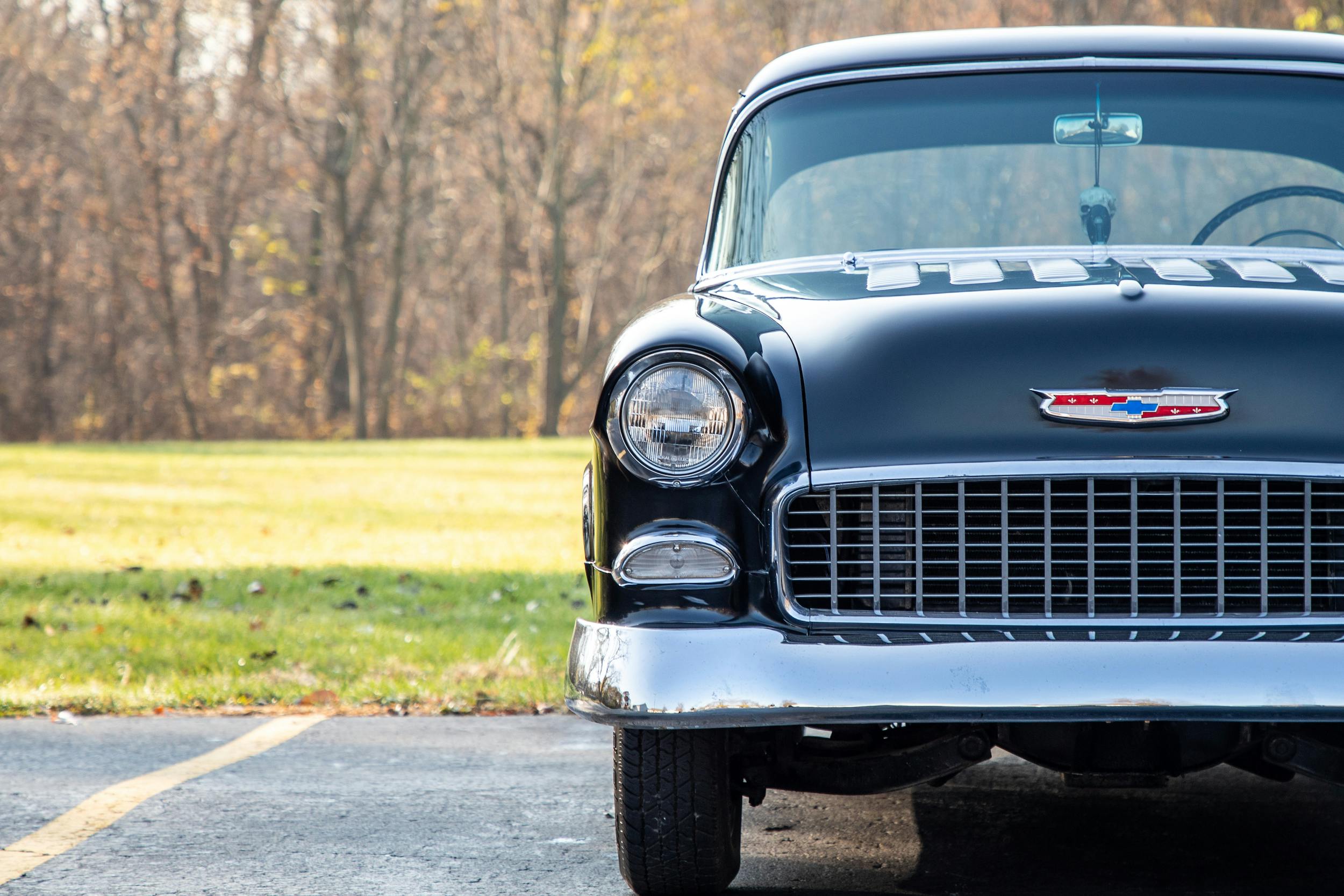

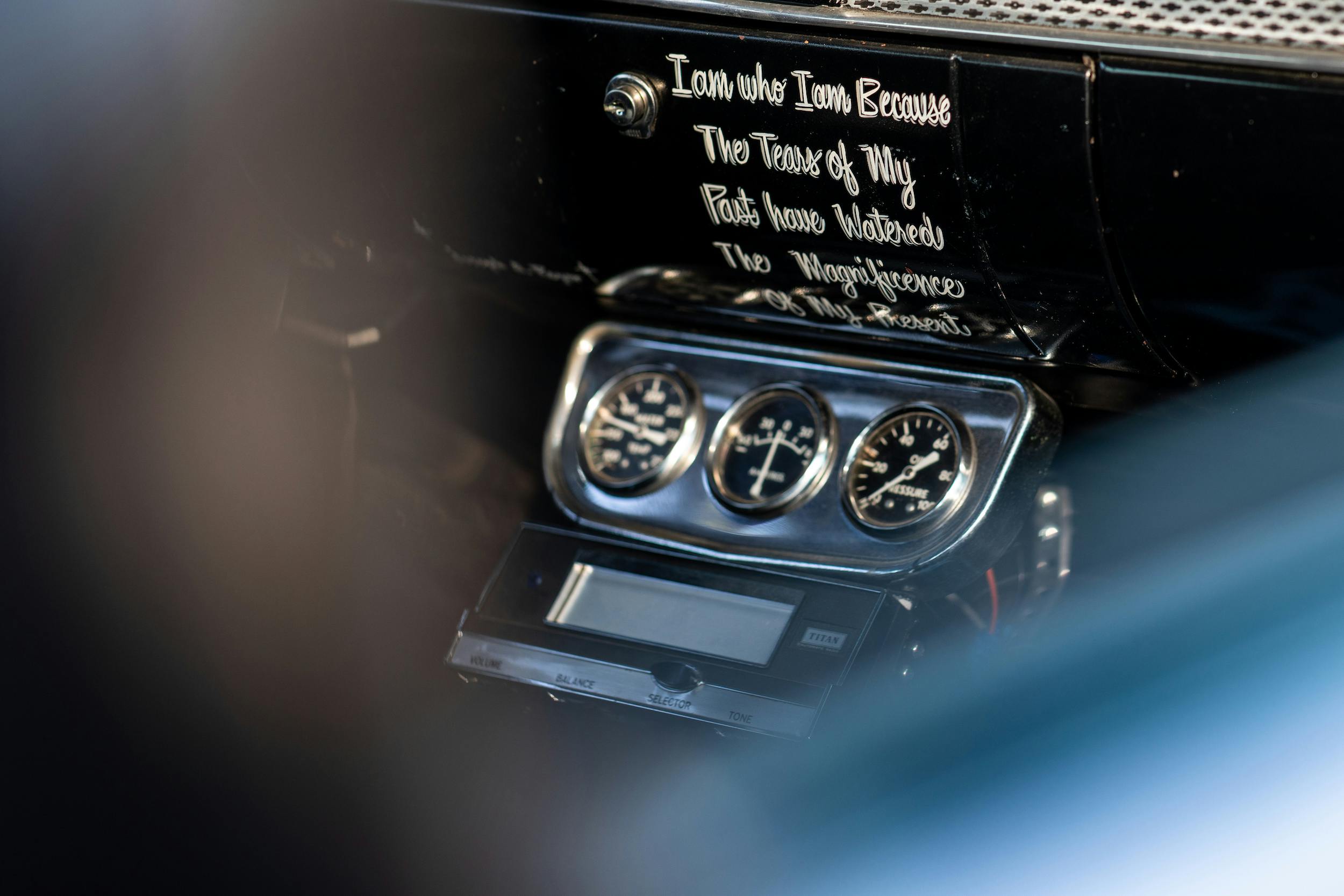


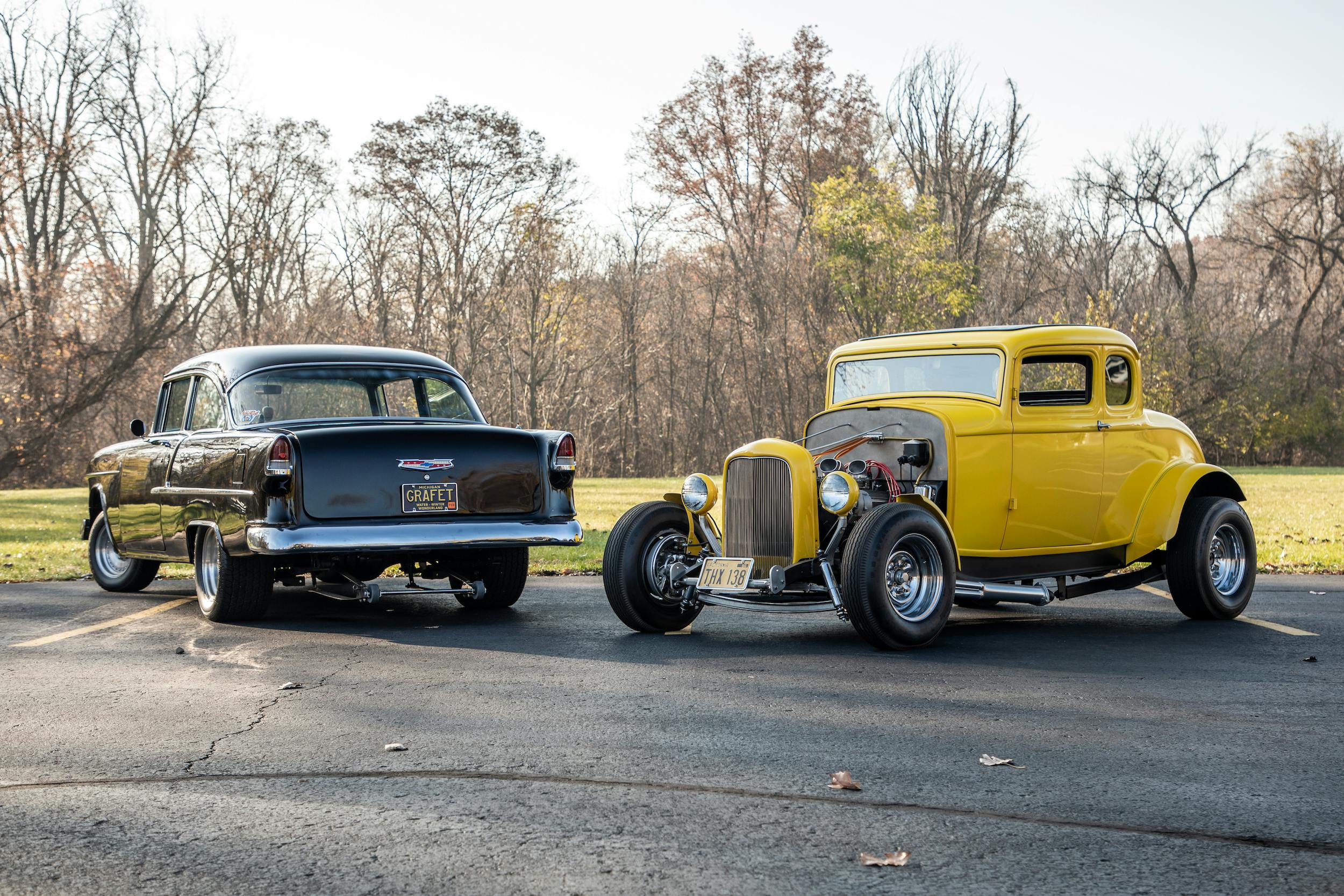


You’re correct. story says 150, side trim is 210, dash is Bel Air.
Like many others, American Graffiti changed my young life. I was a junior in High School in 1973 and was on a double date with a good friend of mine. I was excited about my first date with this girl until I saw the movie. Never saw the girl again but I went out the next week and bought a ’57 Chevy for $900. The rest is history. I have had a string of antique and classic cars over fifty plus years, I still have my 1963 Nova SS convertible I bought in 1978 for $800. “Peel out! I just love it when guys peel out!”
1973 was a great year for me. That summer I was a 19 year old college student and purchased new the car of my dreams, my 73 Firebird that I still own today. Back in those days the new movies didn’t hit all of the theaters at once like they do now. I live in a small Northern California city and was anxiously awaiting American Graffiti to come to our local theater. While visiting Reno, Nevada I was surprised to find the movie was playing there two weeks before it came to my town so I saw it before my friends did. And oh yes I have seen it many many times since then and still enjoy it! Another great aspect of the movie was the soundtrack and I played it constantly in the factory 8 track player of my new Firebird! Fast forward many years and now I’m a retired auto repair shop owner with a dear friend who owns a Milner coupe replica. Five years ago we took the coupe to Reno’s Hot August Nights and spent the whole week there cruising and enjoying all of the events. What a great time we had and what a great movie!
What a GREAT story ! Is your Firebird an un-restored survivor? A non-performance model? Just wondering. Thanks.
Thanks for asking. My Firebird was an Esprit with a 400 and THM 400. It was a daily driver for over 35 years. I restored it 4 years ago and transformed it into a Ram Air Formula 400.
Oh, very nice!, was the engine Quadrajet equipped? I worked for a family owned Oldsmobile dealership. Custom ordered a brand new 1973 Omega with the 350 and 3 speed on the floor with bench seats (introductory year). My income was so low, I could not afford many options, but the motor had to be the biggest offering with the 4bbl. (O: TH-350 was out of the question.
Put about 12k on it, sold it to a good friend and fellow mechanic at the same dealership.
Right after that I ordered a new 1974 Cutlass ‘124’ model (rare), 2 door coupe with the same motor, but with TH-350 automatic and TRUE discrete twin exhaust system. It was the LAST year BEFORE the cats came out and wrecked everything LOL.
It was a fun car, swivel bucket seats and such and NO AC ! But I longed for a 442. As the lot manager at the dealer, I tried to ‘hide’ a leftover (1973) 442 with the 455 among the 1974 lineup in the lot, but, someone was hunting for the car, and ended up buying it before I could sell the Omega. The sales staff was very sorry……..but, that is how it goes.
It would have been a very rare car because it was the strangest of color combos. Moss green with dark green 442 stripes ! It was Oldsmobiles quickest SMOG car made in that year……. I ended up buying a 1968 442 in 1975 and did a restoration of sorts, quickest car I have owned to date ! Write when you get a moment.
I enjoyed this story. May I add?
A long time friend here in MA. purchased one of the 3 ’55 Chevs that were in the movie! We both attended a local auto show last August together. I have some great photos of our cars side by side in the first row ! My 1997 SHO (insured with Hagerty w/antique reg.) and the black ’55 with some really nice, framed movie facts about the car. I would be happy to share photos, but not sure how to go about it other then on FB.
“I aint nobody, dork.” Best line ever…
Happy New Year to everybody. We all have this ”Nostalgia Graffiti” that never goes away. It was 50 years ago when I 1st. saw the movie. After 4, 1932 ford 5/w coupes later, with all the head aches & heat aches. I now have a nice real Henry Ford chopped 5/w coupe in the paint shop. I collected parts & peices & all the correct stuff for years. Now its all coming together. I could tell a long story of everything, but that would take to long. I met ”Paul Le Mat” long ago at Dallas Autorama. Great guy, he signed everything my wife put in front of him. Oh, I have a big collection too. He asked us outside for a smoke break. We talked, had a good time. Lucas choose the best man for ”Milner.” I plan to have my car finished early 2024. My friend & I built a 55 chevy like Falfa’s. I wished I wouldn’t of sold it, but The guy that bought it owns the real 55 from ”’American Graffiti” Also if you are aware of ”The Naked Milner Coupe” that car was mine before it got transformed to a “Graffiti Coupe” This all sounds like a lot of ”Brag” but it’s not. I have the proof with pics & a magazine of the coupe. I never as a poor boy, as I worked hard through life, could or would ever have any such as this. I owe it all to ”GOD” he did all this . Say your prays as I always do. Just remember, keep your rear in gear or the ”Wolman Gona Get You”